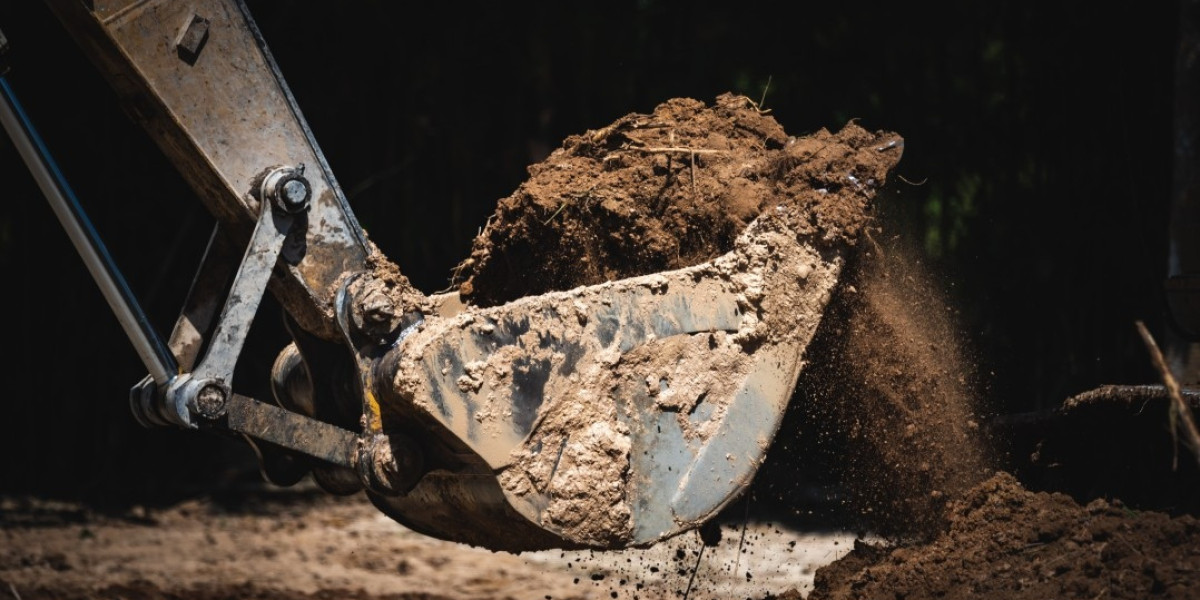You’ve finally done it. You’ve acquired a piece of land in Lawton or the surrounding area, and you’re ready to build. Whether it’s a new warehouse, a retail space, or your own custom home, the vision is clear in your mind. But standing between you and that vision is the raw land itself—a plot that may be uneven, overgrown, or hiding unknown challenges beneath the surface. This initial phase, often called "dirt work," is the most critical part of your entire project. Getting it right sets a solid foundation for everything to come; getting it wrong can lead to costly delays, structural issues, and endless frustration.
The unique landscape of Southwest Oklahoma, with its clay-heavy soils, unpredictable weather, and variable topography, presents specific hurdles. A sudden downpour can turn a poorly graded site into a quagmire, halting work for days. The expansive soils common in Comanche County can shift and swell with moisture changes, threatening the integrity of your foundation if not properly managed. This is why a systematic and professional approach to Dirt Work Lawton is not just a recommendation—it's a necessity for protecting your investment.
The Problem: Why You Can’t Just Start Building
Many project owners are eager to see walls going up, but skipping or rushing the site preparation phase is a grave mistake. The ground is not just a passive platform; it’s a dynamic part of your structure’s ecosystem. Common, often hidden, problems include:
- Unstable Soil: The infamous Oklahoma red clay is incredibly stable when dry but becomes plastic and unstable when wet. Without proper testing and preparation, this can lead to foundation settling and cracking.
- Poor Drainage: A site that doesn't shed water properly is a recipe for disaster. Water pooling around your foundation can cause erosion, basement flooding, and long-term moisture damage.
- Unknown Obstacles: What’s beneath the surface? There could be old tree stumps, buried debris from previous occupants, or even unrecorded utility lines. Discovering these after construction has started is a fast track to budget overruns.
- Incorrect Grade: The slope of your land, or "grade," must direct water away from your structure. An improperly graded site will channel water toward your building, creating persistent problems.
Addressing these issues proactively is the core purpose of comprehensive dirt work. It’s the process of transforming a piece of raw land into a stable, prepared, and construction-ready canvas.
The Solution: A Step-by-Step Guide to Professional Dirt Work
Professional site preparation is a meticulous sequence of operations. Each step builds upon the previous one, ensuring no detail is overlooked. Here are the key stages involved in a successful Dirt Work Lawton OK project.
1. Site Clearing and Demolition
The first physical step is to clear the canvas. This involves removing all obstacles that interfere with construction.
- Tree and Brush Removal: This isn't just about cutting down trees. It involves grinding stumps and removing root systems to prevent future regrowth and settling. On a wooded lot near the Wichita Mountains, this might mean selectively clearing trees while preserving the natural landscape where possible.
- Debris Removal: This includes hauling away any existing rubble, old fences, or abandoned structures.
- Demolition: If there’s an existing structure on the site that needs to be removed, it must be demolished and the debris carted away, making sure to follow local disposal regulations.
2. Site Surveying and Staking
Before any earth is moved, precise measurements are essential. A surveyor will mark the exact boundaries of your property and the precise location of the proposed structure. This ensures your building is positioned correctly according to the plot plan and complies with local Lawton setback requirements. Staking out the foundation and corners provides the literal blueprint on the ground for the excavation crew to follow.
3. Rough Grading and Excavation
This is the phase where the major shaping of the land begins. Using heavy equipment like bulldozers and graders, operators will cut away high spots and fill in low spots to establish the rough, desired slope of the property.
- Cut and Fill: The goal is to balance the earth on your site as much as possible. The soil "cut" from high areas is used to "fill" the low areas, minimizing the need to import expensive fill dirt.
- Foundation Excavation: Once the site is roughly graded, excavation for the specific foundation begins. Whether it’s for a slab, basement, or pier-and-beam system, this step requires precision to reach the specified depth and dimensions.
4. Soil Testing and Compaction
This is arguably the most technical and vital step for long-term stability.
- Soil Analysis: A geotechnical engineer will typically take soil samples to determine its composition and load-bearing capacity. In Lawton, this often confirms the presence of expansive clay.
- Compaction: After fill dirt is placed, it must be compacted in controlled layers, or "lifts." A compactor machine is used to remove air pockets and densify the soil. This is crucial—poorly compacted soil will settle over time, causing cracks in slabs, driveways, and foundations. The soil is tested during compaction to ensure it meets the engineering specifications.
5. Installing Sub-Surface Utilities and Drainage
Before the final grade is set, the hidden infrastructure of your project must go in.
- Utility Trenches: Trenches are excavated for water, sewer, natural gas, and electrical lines. This is often done before the final foundation is poured to allow for easy access.
- Drainage Systems: Proper drainage is key to managing Southwest Oklahoma's heavy rains. This may involve installing French drains, culverts, or stormwater pipes to channel water away from the building and toward appropriate runoff areas. Correctly installed drainage prevents erosion and water intrusion for the life of the structure.
6. Fine Grading and Final Preparation
With utilities in place, the site is ready for its final form.
- Final Grade: Motor graders and box blades are used to create a smooth, precise surface with the exact slope needed for positive drainage. This is the finished grade that will sit directly under your slabs, driveways, and landscaping.
- Base Material: For areas like driveways, parking lots, and building pads, a base of compacted gravel or crushed rock is added. This provides a stable, well-draining platform for concrete or asphalt.
The Practical Benefits: Why This Process Pays Off
Investing in a thorough and professional dirt work process yields significant returns, both immediately and for decades to come.
- Prevents Costly Future Repairs: The few thousand dollars spent on proper soil compaction and drainage today can save you tens of thousands in foundation repairs, slab jacking, and water damage mitigation down the road. It’s the ultimate "ounce of prevention."
- Ensures Project Timeline Adherence: A well-prepared site allows all subsequent trades—concrete crews, framers, electricians—to work efficiently without delays caused by muddy conditions, unforeseen obstacles, or re-work.
- Maximizes Property Value and Safety: A stable foundation is the heart of any valuable property. Proper grading and drainage protect your asset from the elements, ensuring the structure remains safe and sound through Oklahoma's seasonal extremes, from summer thunderstorms to winter freezes.
- Provides Peace of Mind: There is an immense emotional benefit to knowing your project is built on a firm, well-prepared foundation. You can have confidence that the land itself has been tamed and engineered to support your investment.
The journey from a raw piece of land to a construction-ready site is a complex engineering task. It requires local knowledge of Lawton's soil and climate, the right heavy equipment, and a meticulous, step-by-step approach. By understanding and investing in a comprehensive process of dirt work Lawton OK, you are not just moving dirt—you are building the literal and figurative foundation for your project's success. It is the first, and most important, investment you make in the future of your property.



